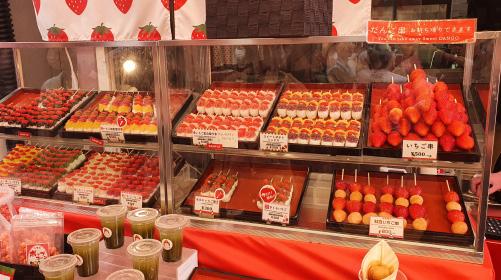
9 minute read
JAPÁN PROMÓCIÓ / Japan Promotiom
foglalást megtenni, mert annyi az utas, hogy gyorsan elfogynak az ülőhelyek a vonatokon.
Könnyíti a közlekedést Tokióban, ha olyan szállást foglalunk, amely közel van valamelyik nagy vonat- és metrómegállóhoz, éppen ezért mi a Sinagava pályaudvarral szembeni Shinagawa
Advertisement
Prince hotelt választottuk, amelyben ugyan kis szobák találhatók, mint mindenhol máshol amúgy a fővárosban, de elfogadható áron. Az első utazás alkalmával vásárolni kell bármely pályaudvaron lévő automatából egy SUICA elnevezésű kártyát, az ára 500 japán yen, amire fel kell tölteni pár ezer yent, mert a tömegközlekedési eszközökön, sőt bizonyos üzletekben is, ezzel lehet fizetni.
A Japan by Myself iroda úgy fűzte fel a napi programjainkat, hogy egy-egy térség legérdekesebb látnivalóit kevés utazással megcsodálhassuk. Az első napunk fő eseménye a cseresznyevirágzás élvezete volt a tokiói UENO parkban. Japánban minden évben közzé teszik, hogy melyik városban milyen dátumokra esik a cseresznye - it is worth making all specific reservations at least a week in advance, because there are so many passengers that the seats on the trains run out quickly. virágzás ideje. Idén ez kicsit eltolódott a változékony időjárás miatt, majdnem egy héttel korábban történt a virágbaborulás Tokióban, de a csodát – szerencsére – még éppen át tudtuk élni.
Iszonyú tömeg sodródott a parkban, mert a turisták mellett a helyiek is kitódultak ide, hogy fotózhassák a virágzó fákat. Sok helyi hölgy kimonót bérelt, s úgy sétált, hogy öltözékével is növelje a nap élényét. A Japan by Myself iroda az UENO parkban ajánlja a Sitamacsi múzeum meglátogatását is, amely gyakorlatilag egy skanzen, s bemutatja miként éltek a késői Meiji kortól a korai Showa periódusig a japánok.
Az UENO park után az Aszakusza térségbe metróztunk. Az Aszakusza városrész megőrizte Tokió régi hangulatát; az ősi Szenszó-dzi templom közelében futó Nakamisze utcában számos hagyományos kézműves boltot és utcai ételárus standot találunk. A 19. század közepén épült Hanajasiki vidámparkban az attrakciók mellet kávézók is találhatók, a folyóparti Kuricu Szumida parkban rendszeresen rendeznek fesztiválokat és tűzijátékot. A vízparton
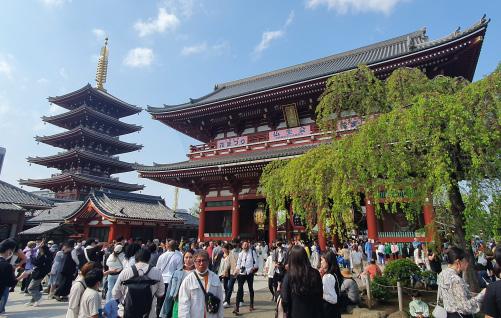
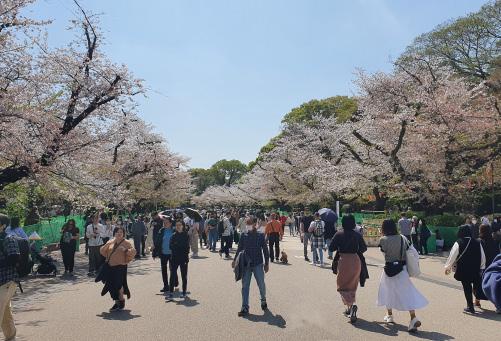
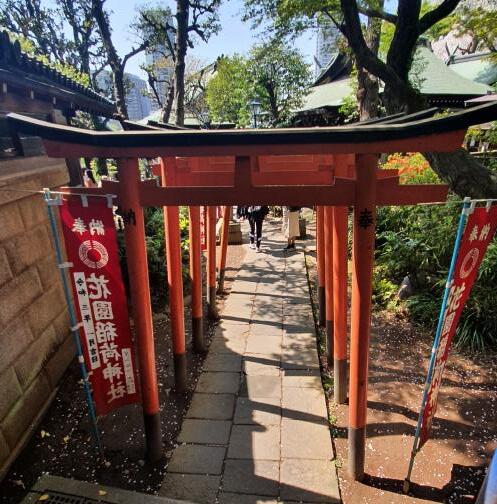
It makes getting around Tokyo easier if you book accommodation that is close to one of the major train and subway stations, this is why we chose the Shinagawa Prince Hotel opposite Shinagawa Station. It has small rooms like everywhere else in the capital, but at a reasonable price. On your first trip, you need to buy a SUICA card from a machine at any train station, the price is 500 Japanese yen, which you need to top up with a few thousand yen, because you can use it to pay on public transport and even in certain shops.
The Japan by Myself office has arranged our daily programs in such a way that we can admire the most interesting sights of each region with a few trips. The main event of our first day was enjoying the cherry blossoms in Tokyo's UENO park. Every year in Japan, the dates of the cherry blossoms are published in each cities. This year it was a bit delayed due to the changeable weather, the flowering took place almost a week earlier in Tokyo, but luckily we were still able to experience the miracle.
There was a huge crowd in the park, because in addition to tourists, locals also came here to take photos of the blooming trees. Many local ladies rented kimonos and walked in such a way as to enhance the life of the day with their attire. The Japan by Mayself office also recommends visiting the Shitamachi museum in UENO Park, which is practically an open-air museum and shows how the folyamatosan fejlődik az előkelő éttermi kínálat, a mellékutcákban pedig egyszerű izakaja kocsmák várják a vendégeket, valamint Ramenes kifőzdék, egy japán levest mi is megkóstoltunk.
Innen Ginzába vezetett az utunk. Ginza Tokió egyik legfontosabb bevásárlónegyede előkelő butikokkal, valamint elegáns koktél- és szusibárokkal. Az 1930-as években épült Uako Honkan áruházban drága ékszereket vásárolhatunk, az ultramodern Ginza Place pedig a csúcstechnológiás műszaki cikkekre szakosodott. Hétvégéken a Csuo dori főutca divatos sétálóutcává válik. A nevezetes Kabuki-za színházban hagyományos japán táncokat és drámát adnak elő. Ginza nagyon luxus része Tokiónak.
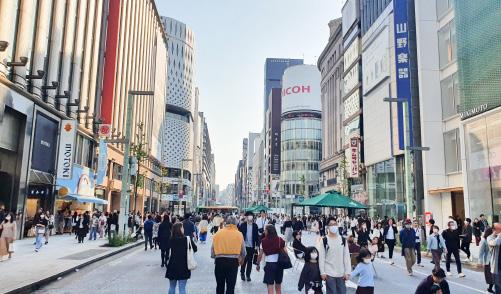
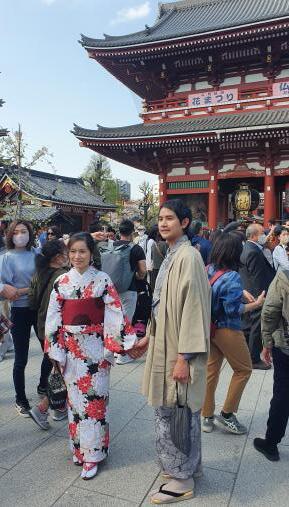
Japanese lived from the late Meiji period to the early Showa period.
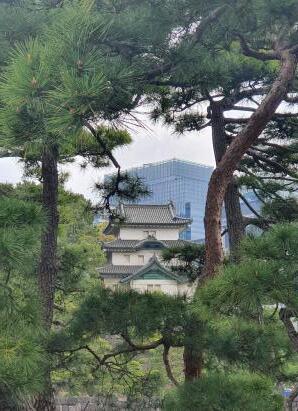
A második tokiói napunkra a Japan by Myself a Császári Palota külső kertjeinek megtekintését ajánlotta (maga a palota nem látogatható), valamint a híres Nidzu-basi híd fotózását. Innen 30 perc sétára található a Kitanomaru park, s ebben a cseresznyefákkal szegélyezett híres Csidorigafucsi sétány. Itt lehetőség adódik csónakázni, illetve megkóstolni pár helyi finomságot, például a világhíres japán édességet, a ragacsos rizslisztből készült mocsit, a Jasakuni oltár mellett.
A csodás Hamarikiu kert megtekintése szerepelt ez után a programunkban. Az Otemon kapunál érdemes belépni, s innen körbe járni a kertet, s csak azután elhagyni, hogy részt veszünk egy teaceremónián a helyi teaházban.
After the UENO park, we took the metro to the Asakusa area. The Asakusa district has preserved the old atmosphere of Tokyo; in Nakamise Street, which runs near the ancient Sensó-ji Temple, you will find many traditional craft shops and street food stalls. The Hanajasiki amusement park, built in the middle of the 19th century, has cafes as well as attractions, and festivals and fireworks are regularly organized in the riverside Kuricu Sumida park. The selection of upscale restaurants on the waterfront is constantly developing, and in the side streets simple izakaya pubs await guests, as well as Ramen houses, where we tasted a delicious Japanese soup. From there we headed to Ginza. Ginza is one of Tokyo's most important shopping districts with upscale boutiques and elegant cocktail and sushi bars. In the Vako Honkan department store built in the 1930s, you can buy expensive jewelry, and the ultramodern Ginza Place specializes in high-tech technical goods. On weekends, the main street of Tsuo Dori turns into a fashionable pe - destrian street. Traditional Japanese dances and drama are performed in the famous Kabuki-za theater. Ginza is a very luxurious part of Tokyo.
For our second day in Tokyo, Japan by Myself recommended visiting the outer gardens of the Imperial Palace (the palace itself is not open to visitors) and photographing the famous Nijubashi Bridge. Kitamomura park is a 30-minute walk from here, with the famous Chiorigafuchi promenade lined with cherry trees. Here you can go boating and taste some local delicacies, such as the world-famous Japanese sweet, mochi made from glutinous rice flour, next to the Yasakuni altar.
Visiting the wonderful Hamarikyu garden was included in our program after that. It is worth entering at the Otemon gate and walking around the garden from here, leaving only after taking part in a tea ceremony at the local teahouse.
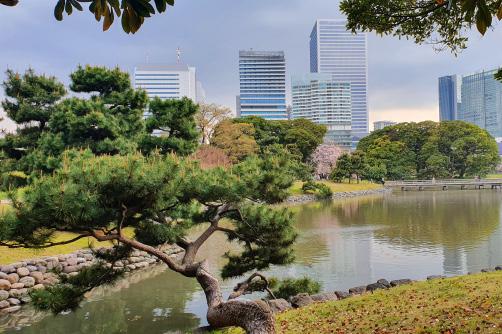
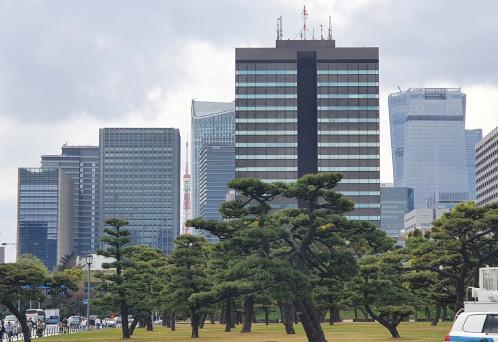
A kert közel van a Daiba negyedhez, sok üdülő szálloda található ezen a mesterséges szigeten. Itt épül fel a tudományos és innovációs múzeum is, amelyben a robotika, az űrkutatás és a biotechnológia vívmányait mutatják be. A mesterséges szigetről csodás látvány nyílik Tókió belvárosának felhőkarcolóira, éppen ezért napnyugtakor érdemes itt tartózkodni, majd sötétedéskor felszállni a Jurikamome különleges vonatra, s útközben csodálni az esti fényeket. A harmadik napunk a Sibuja kereszteződés fotózásával kezdődött, amely a világ legforgalmasabb közlekedési csomópontja. Beültünk egy Starbucks kávézó első emeleti panorámás szalonjába, s onnan bámultuk azt az irdatlan tömeget, ami sokféle irányból nekilódul a zöld lámpánál, hogy keresztbe-kasul áttérjen az út egyik oldaláról a másikra.
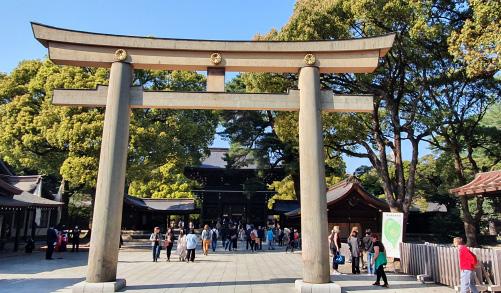
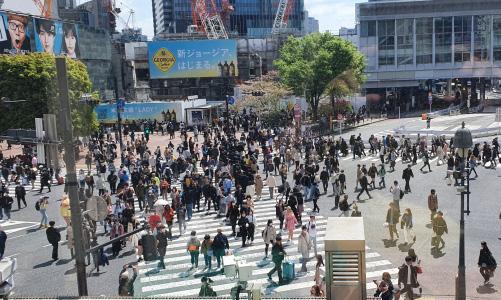
The garden is close to the Daiba district, there are many resort hotels on this artificial island. The science and innovation museum also be built here, in which the achievements of robotics, space research and biotechnology are presented. The artificial island offers a wonderful view of the skyscrapers of downtown Tokyo, which is why it is worth staying here at sunset, then boarding the Yurikamome special train at dusk, and admiring the evening lights on the way.
Itt található egyébként a hacsico akita fajtájú kutya szobra, amely a turisták zarándokhelyévé vált. Ez egy hajdani professzor hűséges ebét örökíti meg, aki minden este ott várta munkából hazatérő gazdáját a sibujai állomáson - egyesek szerint hónapokkal, mások szerint több mint 9 évvel annak halála után is. Hosszú sor állt a kutyaszobor előtt, de kivártuk mi is egy fotóra.
A Sibujától gyalogosan közelítettük meg a Meidzi szentélyt, majd délután a Sindzuku gjoen parkot Tokió Sinjuku városrészében. Eredetileg a Naitó daimjo család rezidenciája volt.
Our third day started with photographing Shibuya Crossing, the busiest traffic junction in the world. We sat down in the first-floor panoramic lounge of a Starbucks cafe, and from there we looked at the immense crowd that started from many directions at the green light to cross from one side of the road to the other. By the way, here is the statue of the Hachico Akita dog, which has become a place of pilgrimage for tourists. It captures the faithful lunch of a former professor who waited for his master every evening when he returned from work at the Shibuya station - according to some months, according to others, more than 9 years after his death. There was a long line in front of the dog statue, but we also waited for a photo. From Shibuya, we approached the Meiji Shrine on foot, and then in the afternoon the Shinjuku Gjoen Park in the Shinjuku district of Tokyo. It was originally the residence of the Naitó daimyo family.
Estére értünk a Tokio Metropolitan Government épületéhez, amelynek tetejére 45 perc várakozás után jutottunk fel gyorslifttel. Innen élvezhettük a világváros panorámáját. Meglepő, de ingyenes ez a lehetőség.
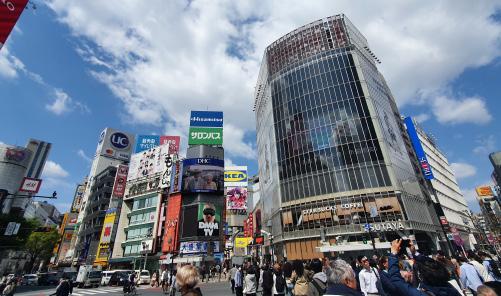
Különleges élményt jelentett néhány gyümölcsárus felkeresése az utcán. Ezek a boltok inkább ékszerüzletekre hasonlítanak Japánban, mint zöldséges boltokra. Minden gyümölcs szemenként van csodásan becsomagolva, s ajándék kosarakba rendezve. Az árak elképesztők. Nagyjából 60 szem cseresznye 40 ezer forint, pár szem eper 20 ezer forint, egy mangó 10-15 ezer, egy kerek görögdinnye 30 ezer, az ember csak kapkodja a fejét. S akkor még nem is láttunk kocka alakú görögdinnyét, mert Japánban ilyen is van, így annak árát nem is ismerjük.
In the evening, we arrived at the Tokyo Metropolitan Government building, to the top of which we reached after 45 minutes of waiting with an express elevator. From here we could enjoy the panorama of the city. Surprisingly, this option was free.
Visiting some fruit sellers on the street was a special experience. These stores look more like jewelry stores in Japan than greengrocers. Each fruit is beautifully wrapped individually and arranged in gift baskets. The prices are amazing. Roughly 60 cherries are HUF 40 000, a few strawberries are HUF 20 000, a mango is 10-15 thousand, a round watermelon is 30,000, you can only scratch your head. And then we haven't even seen a cubeshaped watermelon, because there is one in Japan, so we don't even know its price.
But why is fruit so expensive here? Because it doesn't grow much, most of Japan is a mountainous, volcanic area that is unsuitable for farming and fruit growing. Therefore, it must be imported. Or if the fruit does grow, then in a greenhouse, with great care, energy and financial investment. This is also why rice, almonds, soybeans, watercress, etc. were formed thousands of years ago. The cultivation of which this climate and nutrient medium suit. After the trip to Tokyo, we went to Kyoto on the Shinkanzen super express, which runs at a speed of 300 kilometers per hour. We covered the distance of nearly 500 kilometers in 2 hours and 30 minutes and found ourselves in the former imperial capital of Japan with one and a half million inhabitants - on the island of Honsu. After moving into the Rhiga Royal hotel based on the recommendation of the Japan by Myself office (Web: https://japanbymyself.com/hu, e-mail: office. hu@japanbymyself.com, phone: +36302792060), we ventured into the Teramachi shopping area Nishiki Market, considered the kitchen of Kyoto. Here we had a blast, eating so many delicacies at the perfectly clean stalls, from fried shrimps to fried octopuses to steamed dumplings filled with various meats. We spent hours walking here and enjoying the gastronomic selection.
De miért is ilyen drága itt a gyümölcs? Mert nemigen nő, Japán nagyrésze hegyes, vulkanikus terület, amely földművelésre, gyümölcstermesztésre alkalmatlan. Ezért importálni kell. Vagy ha nő is a gyümölcs, akkor üvegházban, nagy odafigyeléssel, energia és pénzbefektetéssel. Ezért is alakult ki évezredekkel ezelőtt a rizs, mandula, szójabab, víziretek, stb. termesztése, amiknek megfelel ez az éghajlat és a táptalaj.
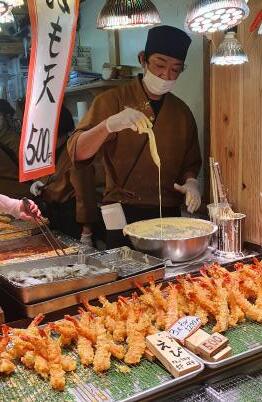
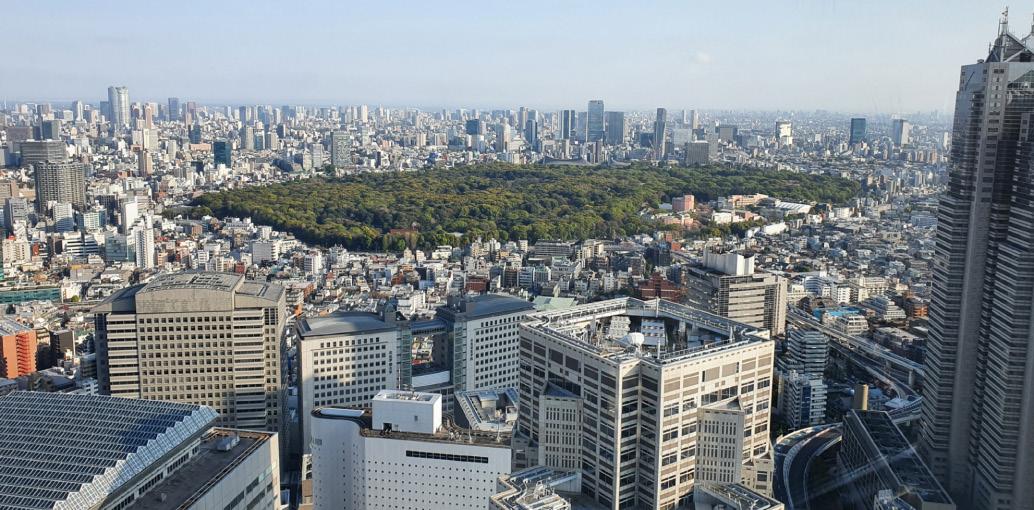
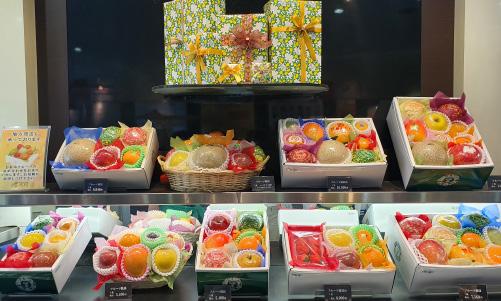
A tokiói kiruccanás után Kiotóba indultunk a 300 kilométer/órás sebességgel száguldó Sinkanszen szuper expresszel. 2 óra 30 perc alatt tettük meg a közel 500 kilométeres távot és már délre a másfél millió lakosú egykori japán császári fővárosban találtuk magunkat - Honsu szigetén.
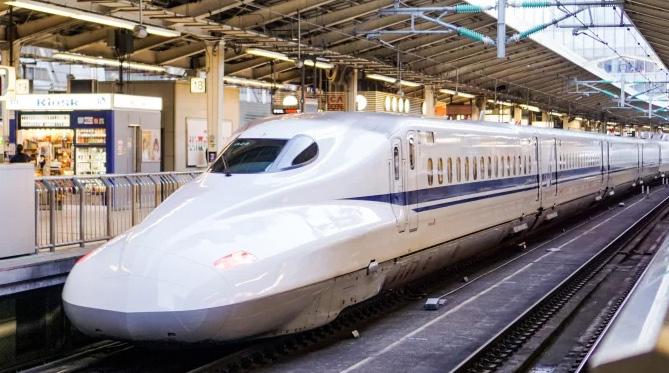
Miután beköltöztünk a Rhiga Royal hotelbe a Japan by Myself iroda javaslata alapján (Web: https://japanbymyself.com/hu, e-mail cím: office.hu@japanbymyself.com, telefon: +36302792060)
A 10-15 minutes walk from here is the Pontocho district, one of Kyoto's geisha districts. This district is known for its geisha and traditional teahouses. It participates in the national monument protection program in the same way as the Gion geisha district. There were so many tourists here that after nearly an hour and a half of searching, we managed to get into a restaurant where we had a fantastic dinner.
Asian food is light, so we had a good night, no tossing and turning in bed. After breakfast, we headed to Ginkakuji Temple. Ginkakuji is a temple complex belonging to the Sokokuji branch of the Rinzai sect of Zen Buddhism in the eastern part of Kyoto, of which only two buildings have survived since its foundation in 1482.










